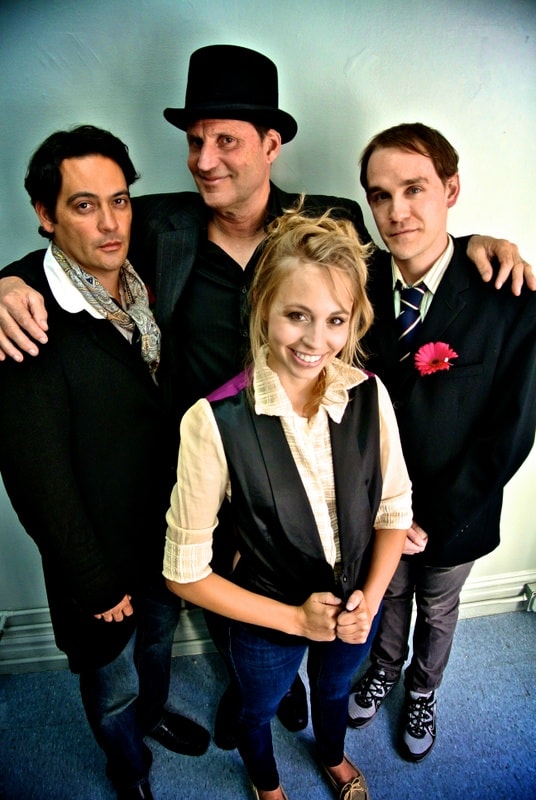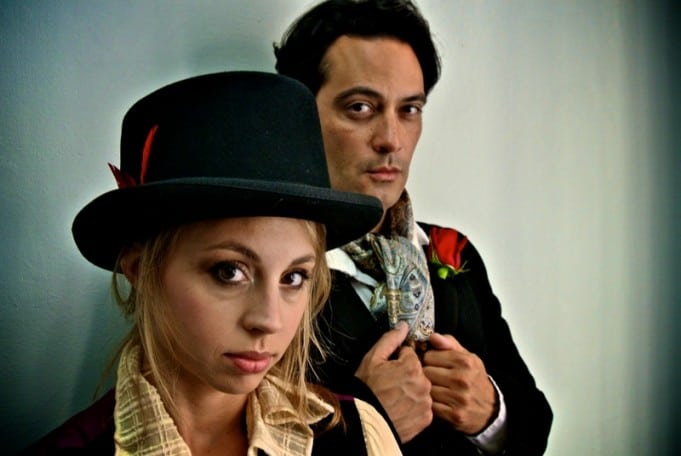
Can I take Jimmy Charles Dean home for the weekend?
I mean just for the weekend?
OK, I got that out of my system (well, not really…). However, dear reader, you can appreciate, it’s a rare show that elicits that response. Every four or five years, there’s a show that underscores why one fell in love with theatre in the first place. It’s not usually a touring show, albeit with all their technical razzle dazzle – and it’s probably not something academic either. The SF Playhouse production of My Fair Lady was like falling in love with theatre all over again. This production of My Fair Lady was so stupendously good I forgot that I ODed on all of these songs 20 years ago.
MORE SF CULTURE: Festival del Sole: Spectacular evening of style, celebration at Meadowood gala (Photos)
Fortunately, no one told director Bill English that bringing this extravaganza with its huge cast, multiplicity of impossible sets, and improbable accents to the tiny stage on Sutter Street was impossible.
Fortunately, no one told director Bill English that bringing this extravaganza with its huge cast, multiplicity of impossible sets, and improbable accents to the tiny stage on Sutter Street was impossible. This version distills the huge show with which we’re so familiar down to its purest essence, and puts it in the shockingly capable hands of a mere ten-person cast. This isn’t some watered down thing that leaves you impatiently jonesing for the original. Rather, you’ve gotten such a purified extract of the Lerner and Lowe original that you’re clapping along with the audience, and singing “Get Me to the Church on Time” for days afterwards. Twenty four hours afterwards, I still marvel at how the production was so perfectly blocked on that tiny stage. This isn’t some community theatre production that leaves you charitably clucking, but rather something so shockingly good that you’re reduced to superlatives.

The magic was woven by a stunning cast, two fabulous pianists, and a crew that moved the set pieces with impossible deftness. Jimmy Charles Dean brought us an Alfred P. Doolittle with such a twinkle to his rheumy eyes that one might has well have been seeing Stanley Holloway, who starred in both the original Broadway cast and the movie. Lest you think that all characters were clones of the 1956 production, Johnny Moreno gave us a comparatively youthful take on Henry Higgins, capturing perfectly the arrogance and self-obsession of the dear professor.
Bill English’s program notes focus on the class divide in 1912 when George Bernard Shaw’s Pygmalion was originally penned. English’s remarks called to mind a similar observation I had when watching Broadway San Jose’s recent production of Mary Poppins. Just as the institution of the nanny began in Victorian England with its large lumpen proletariat and miniscule class of the fabulously wealthy, this period also brought the tension between the proverbial flower girl and Freddy Eynsford-Hill. Today, we have strawberry sellers on suburban corners and suburban matrons claiming that their Guatemalan nanny is just like Mary Poppins. Comparing our time to that of Pygmalion, English notes that “ours is one of those times.” If our obsession with Victoriania is any indication, English is right on the money.
This show is running through September 29. Remind yourself of the transformative power of theatre, and take this one in. I know I’ll be going back for seconds.
For more high resolution production photos of My Fair Lady by SF Playhouse, hop on over to the Stark Insider Facebook page.




